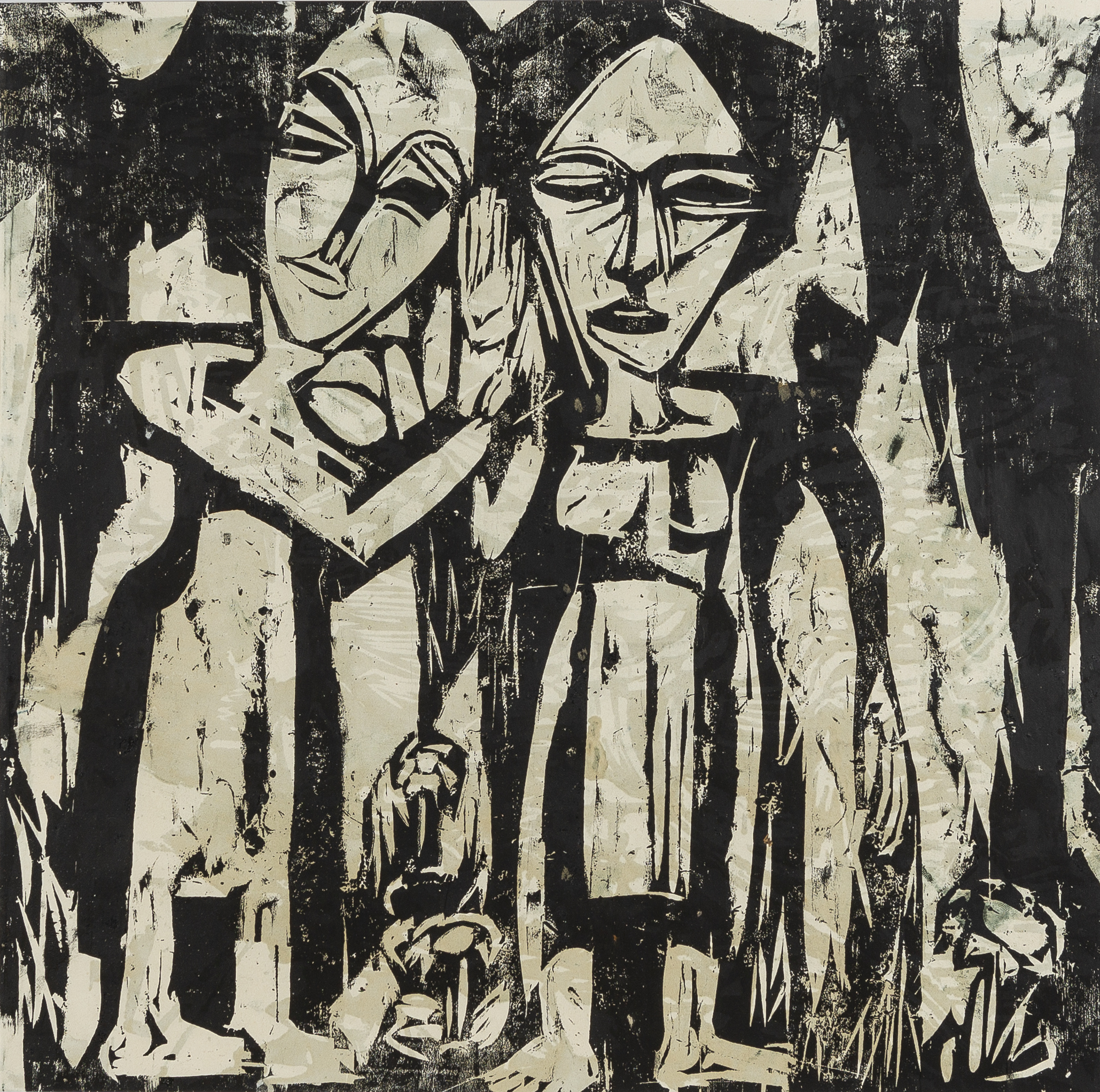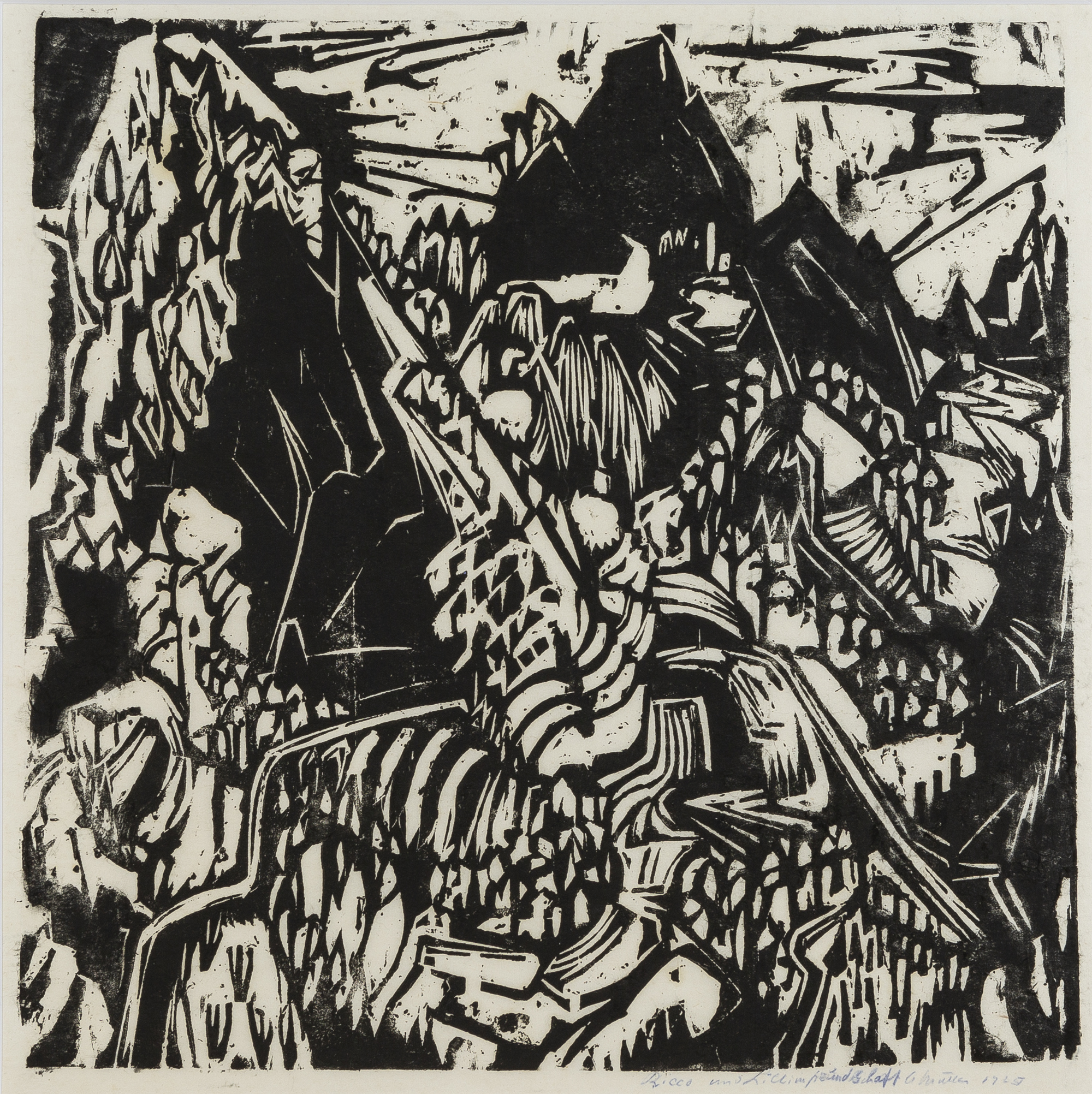After first being trained in a glass-painting studio, Albert Müller continued his studies at the Allgemeine Gewerbeschule in Basel from 1913 to 1917. Influenced by the Swiss glass painter and designer Louis Moilliet, as well as by Edward Munch and the German expressionists, Müller distanced himself from dominant academic standards in favour of an elementary, powerful, expressive representation of reality.
His paintings, drawings, etchings, stained-glass windows and sculptures are usually defined by energetic strokes, audacious contours and boldly arranged, saturated colours. In his wood engravings—including Tessinerlandschaft III (1925) and Tessinerinnen (undated)—or his etchings, he sought contrast effects, and used a full repertoire of grey nuances, by applying aquatint and dash of acid to his brush. His friendship with Cuno Amiet, whom he visited in Oschwand during the summer of 1918, enabled him to perfect the flat printing technique and completely abandon dark tones.
When his works appeared in the Christmas exhibition at the Kunsthalle Basel in 1919, Müller finally got noticed on the Basel art scene, and contributed to supporting the foundations of the canton’s culture. He collaborated with Niklaus Stoecklin in Italy in the 1920s, but it was not until 1924 when he met Ernst Ludwig Kirchner (founder of the German expressionist group Die Brücke, who had moved to Davos in 1917) that Müller started to refine his plastic language. In the expressionist spirit, he created many sketches with strong tones, as well as paintings depicting landscapes and variations on the theme of the human figure.
That same year, he founded the Rot-Blau artist group with Hermann Scherer and Paul Camenisch, with a view to improving their exhibition possibilities and obtaining public commissions for Swiss expressionism. He left the group a year later, seeking to distance himself from Scherer’s work. His life ended a short time later at the age of twenty-nine, following an illness.
His paintings, drawings, etchings, stained-glass windows and sculptures are usually defined by energetic strokes, audacious contours and boldly arranged, saturated colours. In his wood engravings—including Tessinerlandschaft III (1925) and Tessinerinnen (undated)—or his etchings, he sought contrast effects, and used a full repertoire of grey nuances, by applying aquatint and dash of acid to his brush. His friendship with Cuno Amiet, whom he visited in Oschwand during the summer of 1918, enabled him to perfect the flat printing technique and completely abandon dark tones.
When his works appeared in the Christmas exhibition at the Kunsthalle Basel in 1919, Müller finally got noticed on the Basel art scene, and contributed to supporting the foundations of the canton’s culture. He collaborated with Niklaus Stoecklin in Italy in the 1920s, but it was not until 1924 when he met Ernst Ludwig Kirchner (founder of the German expressionist group Die Brücke, who had moved to Davos in 1917) that Müller started to refine his plastic language. In the expressionist spirit, he created many sketches with strong tones, as well as paintings depicting landscapes and variations on the theme of the human figure.
That same year, he founded the Rot-Blau artist group with Hermann Scherer and Paul Camenisch, with a view to improving their exhibition possibilities and obtaining public commissions for Swiss expressionism. He left the group a year later, seeking to distance himself from Scherer’s work. His life ended a short time later at the age of twenty-nine, following an illness.

